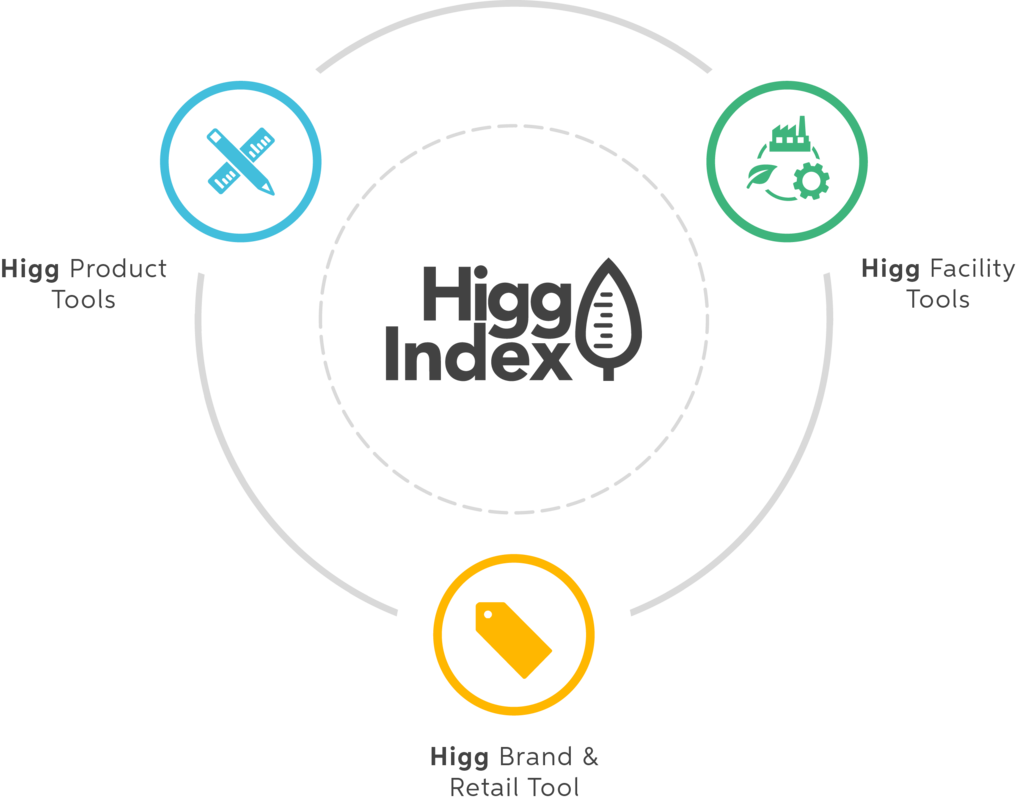The Higg Index was created in 2012 by The Sustainable Apparel Coalition. The coalition is a non-profit organisation made up of over 200 members including brands, manufacturers, NGOs and academic institutions. The name was inspired by the Higgs Boson particle which describes the origins of the universe and the Higg Index describes the origins of your clothes. It was also easy to trademark in 120 countries. Currently the Higg Index is being used by over 8,000 businesses.
The Index takes a whole product lifecycle approach, i.e product materials through to product end of life impact. It uses a scoring scale to show the product’s environmental impact. It’s currently used for internal company use for evaluation and improvement although there has been some testing of using the Higg Index on products at the point of sale by some brands such as Adidas.
So, how does it work?! The Higg Index is a score based system. The scores given by the Higg Index are intended to be improved upon year on year. The Higg Index runs a verification program to ensure the scores are correct and to identify areas for improvement.

Manufacturers and brands are given tools to analyse supply chain steps and materials in order to numerically measure their impact and compare their performance to an industry standards. The Higg Index tools are divided into Product, Facility and Brand & Retail.
>Product
The product tools include:
A) Materials Data Submission: where users can submit data.
B) Materials Sustainability Index: this is a library of materials where users can view their respective material scores. These scores are thoroughly calculated on the product development process taking into account the raw material, yarn formation method, textile formation, preparation, coloration, finishing and the chemistry certifications. Users can save combinations of materials that go into a product to give an overall score for a garment.
C) Design & Development Module: this section is for designers and developers in order to design better. Users answer a questionnaire, receive a design score and are then able to learn how to improve the sustainability of a product.
>Facility
This is for manufacturers to measure their social and environmental impacts at their facilities. A review is conducted at least once a year and is assessed through benchmarking by facility type. This encourages facilities to use industry best practices in order to make improvements. It also creates a more open conversation between stakeholders across the entire chain to make improvements.
>Brand & Retail
Brands are key to communicating the the value of sustainable fashion to the end consumer. This section helps brands with sustainability strategies and delivering the message to their consumers. It also allows brands and retailers to assess the sustainability (both social and environmental) of the product’s entire life cycle through evaluation and benchmarking.
The chief executive Jason Kibbey told fashion author Dana Thomas that in 2020 consumers will be able to see the footprint of Higg Index users so consumers can see the carbon footprint of a garment.
Learn more at: https://apparelcoalition.org/the-higg-index/
Pictures courtesy of The Sustainable Apparel Coalition.